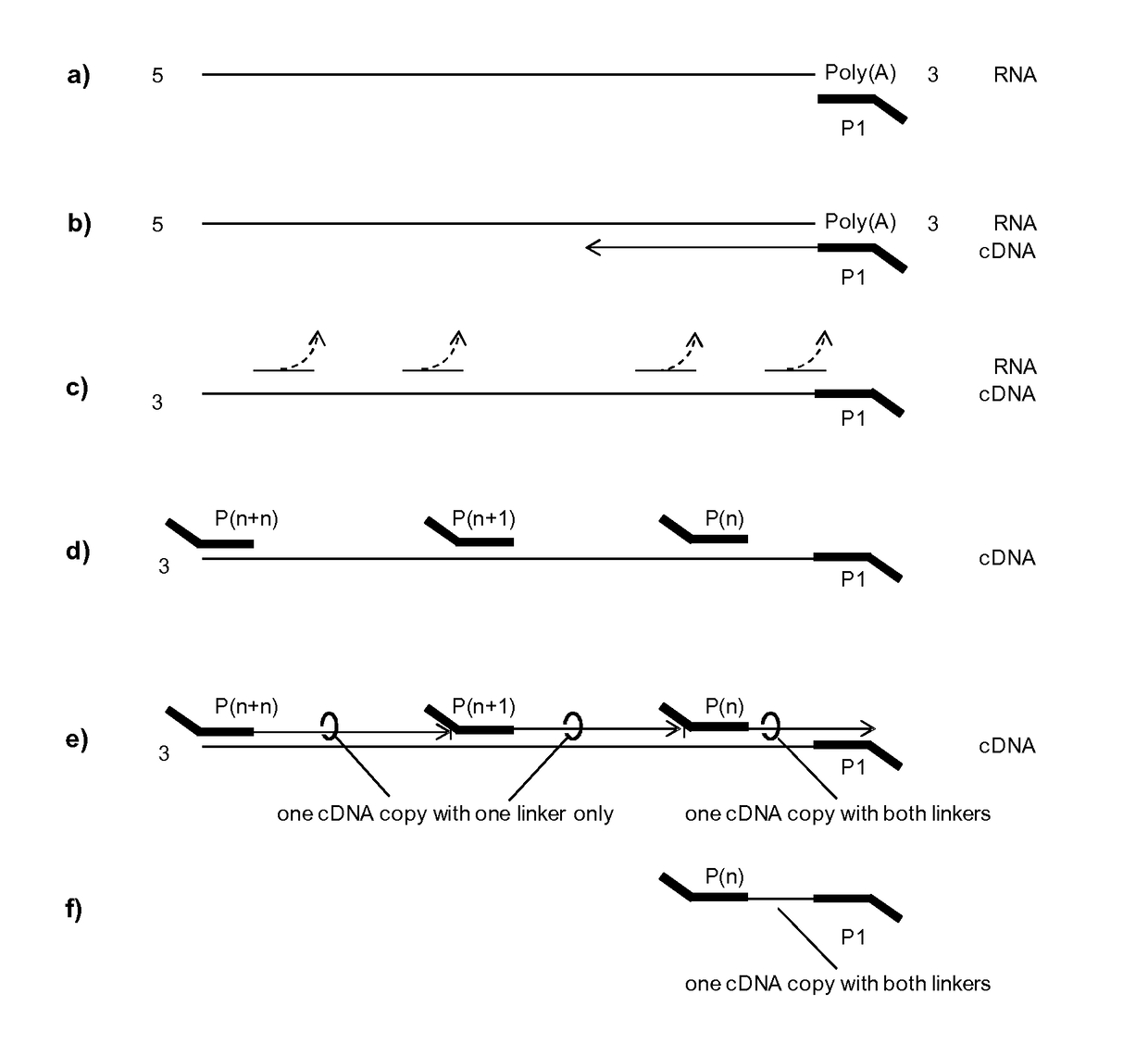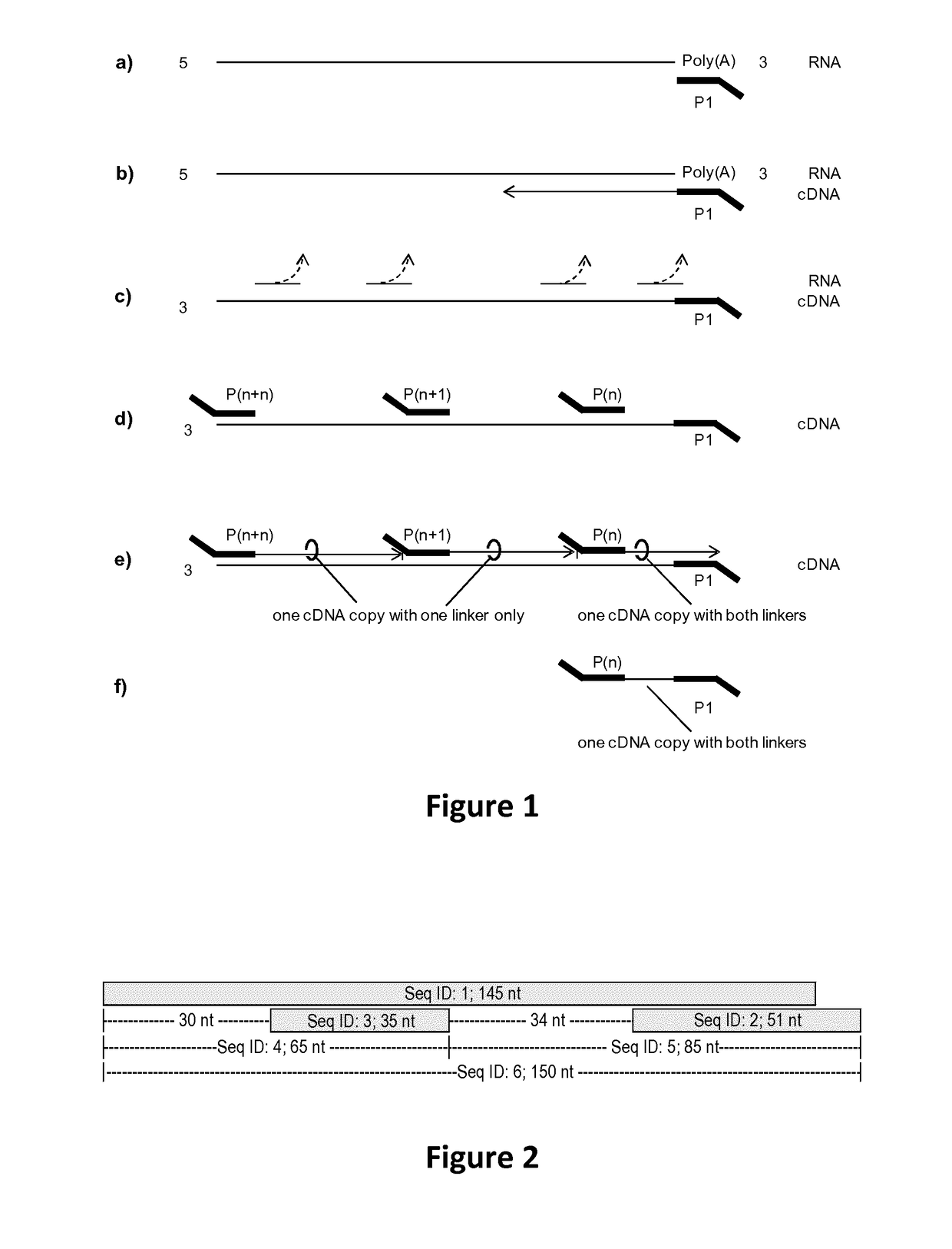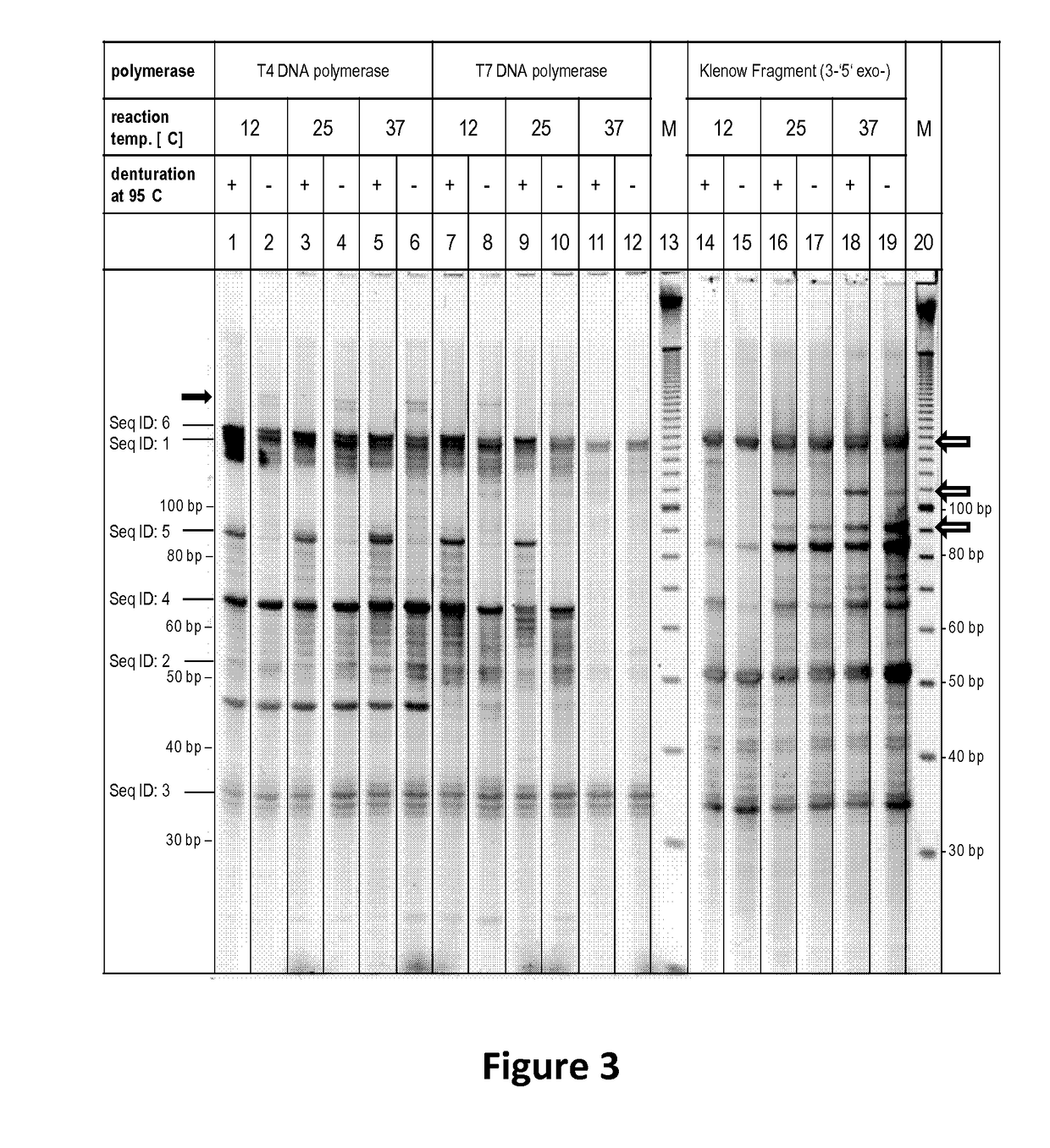Copy number preserving RNA analysis method
a technology of rna analysis and copy number preservation, which is applied in the field of rna analysis methods, can solve the problems of ambiguous results of high-resolution gene expression experiments, inability to carry out large-scale analysis, and increase in costs, etc., and achieves reliable, efficient, simple and cost-effective methods.
- Summary
- Abstract
- Description
- Claims
- Application Information
AI Technical Summary
Benefits of technology
Problems solved by technology
Method used
Image
Examples
example 1
al NGS Library Generation for an Illumina Sequencing Platform
[0094]In short, the principle library generation is carried out as described in FIG. 1. a) cDNA synthesis is initiated by priming to a known region or tag which is either present already (here Poly(A) of mRNA) or attached in a preceding reaction. P1 is complementary to said known region and furthermore contains a non complementary specific sequence at its 5′ end serving as a universal tag. b) RNA is reverse transcribed into cDNA by an RNA dependent polymerase i.e. a reverse transcriptase. c) After cDNA synthesis the RNA template is hydrolyzed or degraded either by RNAses, pH changes (NaOH and heat), or divalent cations (Mn2+, Mg2+ and heat). d) Then, the single stranded cDNA is primed by multiple random primers, P(n), P(n+1), . . . , P(n+n), and e) a second strand is synthesized using a DNA dependent polymerase without strand displacement. The lack of strand displacement guarantees that only the most 3′ fragment will conta...
PUM
| Property | Measurement | Unit |
|---|---|---|
| Volume | aaaaa | aaaaa |
| Elongation | aaaaa | aaaaa |
Abstract
Description
Claims
Application Information
 Login to View More
Login to View More - R&D
- Intellectual Property
- Life Sciences
- Materials
- Tech Scout
- Unparalleled Data Quality
- Higher Quality Content
- 60% Fewer Hallucinations
Browse by: Latest US Patents, China's latest patents, Technical Efficacy Thesaurus, Application Domain, Technology Topic, Popular Technical Reports.
© 2025 PatSnap. All rights reserved.Legal|Privacy policy|Modern Slavery Act Transparency Statement|Sitemap|About US| Contact US: help@patsnap.com



